From Perception to Precision: Unveiling the Hierarchy of Visual Skills Development
Visual skills are essential for our daily lives, allowing us to perceive and interpret the world around us. From recognizing faces to reading signs, our visual abilities play a significant role in our interactions and understanding of the environment. However, visual skills are not innate; they develop over time through a hierarchical process. In this article, we will explore the hierarchy of visual skills development, shedding light on the different stages and highlighting their importance.
Introduction
Visual skills encompass a range of abilities that enable us to make sense of the visual stimuli we encounter. These skills start developing from an early age and continue to refine throughout our lives. Understanding the hierarchy of visual skills development can provide valuable insights for educators, parents, and individuals seeking to enhance their visual capabilities.
The Foundation: Visual Perception
Visual perception forms the basis of visual skills development. It involves the ability to process and interpret visual information accurately. At a fundamental level, visual perception includes the recognition of shapes, colors, and patterns. Infants begin developing these skills by focusing on high-contrast objects and gradually progress to more complex visual stimuli.
Building Blocks: Eye Movement Control
Once the foundation of visual perception is established, the next stage involves eye movement control. Efficient eye movements are crucial for exploring the visual field, tracking moving objects, and shifting attention. Developing smooth pursuits, saccades, and fixations allows individuals to scan their surroundings effectively and gather information efficiently.
Visual Processing: Form and Object Recognition
As visual skills advance, individuals become capable of recognizing and processing forms and objects. This stage involves perceiving and differentiating shapes, letters, and symbols. Children start associating sounds with visual representations, laying the groundwork for reading and language development.
Visual Integration: Depth Perception and Spatial Awareness
Depth perception and spatial awareness contribute to our understanding of the three-dimensional world. These skills enable us to judge distances, perceive depth, and navigate through space accurately. They involve the integration of visual cues from both eyes, allowing for the perception of depth and the ability to distinguish objects at various distances.
Visual Cognition: Attention and Visual Memory
Visual cognition encompasses the higher-order cognitive processes that influence visual perception and interpretation. Attention and visual memory play crucial roles in this stage of visual skills development. Attentional skills allow individuals to selectively focus on relevant visual information, while visual memory enables the retention and retrieval of visual stimuli.
Fine-tuning Precision: Visual Motor Integration
The final stage of the hierarchy of visual skills development involves the integration of visual information with motor responses. This stage requires precise coordination between the visual system and motor skills. Visual motor integration enables activities such as handwriting, drawing, and playing sports, where accurate visual perception and motor control are essential.
Conclusion
Understanding the hierarchy of visual skills development is crucial for appreciating the complexity and progression of visual abilities. From the foundation of visual perception to the refinement of visual motor integration, each stage builds upon the previous one, enhancing our overall visual capabilities. By recognizing the importance of each stage, we can provide targeted interventions and support for individuals with visual skill challenges.
1. Can visual skills be improved through practice and training?
Yes, visual skills can be improved through practice and training. Just like any other skill, visual abilities can be honed and refined with focused exercises and activities. Here are some strategies to enhance visual skills:
Visual Perception: Engage in activities that require visual discrimination, such as puzzles, matching games, and sorting objects based on color or shape. Practice observing details in the environment and identifying patterns.
Eye Movement Control: Perform eye-tracking exercises by following moving objects or tracking specific points on a screen. Reading and tracking words while minimizing regression and skipping lines can also improve eye movement control.
Form and Object Recognition: Engage in activities that involve identifying and categorizing objects, such as naming objects in a picture or playing "I Spy" games. Reading books with varied fonts and styles can also aid in form and object recognition.
Depth Perception and Spatial Awareness: Participate in activities that involve judging distances and spatial relationships, such as playing sports, building puzzles, or navigating obstacle courses. Engaging in virtual reality experiences can also provide immersive training for depth perception.
Attention and Visual Memory: Practice visual attention exercises by focusing on specific details in a busy scene or memorizing sequences of visual stimuli. Play memory games, such as card matching, to improve visual memory and recall.
Visual Motor Integration: Engage in activities that require hand-eye coordination, such as drawing, coloring, playing musical instruments, or participating in sports. Fine motor activities like threading beads or building with blocks can also enhance visual motor integration.
Remember, consistency and regular practice are key to improving visual skills. Seek guidance from professionals, such as occupational therapists or vision specialists, who can provide tailored exercises and interventions based on individual needs.
2. Are visual skills equally important for children and adults?
Yes, visual skills are equally important for both children and adults. Visual abilities play a vital role in various aspects of daily life, regardless of age. In children, developing strong visual skills is crucial for academic success, as reading, writing, and understanding visual information are integral parts of the learning process. Visual skills also contribute to social interactions, sports performance, and overall cognitive development in children.
For adults, visual skills remain essential for tasks such as reading, driving, navigating, and interpreting visual information in professional settings. Additionally, visual skills can impact occupational performance, such as in professions that require precise hand-eye coordination or visual analysis, like surgery, design, or engineering.
Maintaining and enhancing visual skills throughout adulthood is important for healthy aging and independence. Regular eye exams, engaging in visual exercises, and adopting good visual habits, such as taking breaks from prolonged screen use, can help preserve and improve visual skills in adults.
3. Can visual skills be affected by certain conditions or injuries?
Yes, certain conditions and injuries can affect visual skills. Conditions such as amblyopia (lazy eye), strabismus (eye misalignment), and visual processing disorders can impact visual perception, eye movement control, and depth perception. Neurological conditions, such as stroke or traumatic brain injury, can also lead to visual impairments, including loss of visual field or difficulties with visual integration and cognition.
Injuries to the eyes or visual pathways can result in partial or complete vision loss, affecting various aspects of visual skills. Additionally, age-related eye conditions like cataracts, macular degeneration, and glaucoma can significantly impact visual abilities.
It is important to seek appropriate medical care and vision rehabilitation if visual skills are affected by a condition or injury. Vision therapy, specialized interventions, and assistive technologies can aid in the recovery and improvement of visual skills in such cases.
4. Can improving visual skills benefit academic performance?
Yes, improving visual skills can have a positive impact on academic performance. Many academic tasks require strong visual skills, and enhancing these skills can lead to improved academic outcomes. Here are some ways in which improving visual skills can benefit academic performance:
Reading and Comprehension: Strong visual perception and form recognition skills are crucial for reading fluency and comprehension. By improving visual skills, individuals can enhance their ability to decode and understand written text, leading to improved reading comprehension.
Writing and Spelling: Visual skills play a role in handwriting, spelling, and letter formation. Developing visual perception and fine motor integration can lead to improved handwriting legibility and spelling accuracy.
Mathematics: Visual skills are essential in mathematics, where students need to interpret and manipulate visual representations, such as numbers, symbols, and graphs. Enhanced visual processing and spatial awareness can aid in understanding mathematical concepts and solving problems.
Note-Taking and Organization: Effective note-taking requires the ability to quickly capture and organize information visually. Improved visual memory and attention can help students better organize their notes and retain information.
Visual Presentations: Visual skills are valuable when creating and delivering presentations. The ability to design visually appealing slides, use appropriate visual aids, and effectively convey information through visuals can enhance the impact of presentations.
Critical Thinking and Problem-Solving: Visual skills contribute to critical thinking and problem-solving abilities. Strong visual perception and pattern recognition skills allow individuals to identify relationships, analyze visual data, and generate creative solutions.
By focusing on developing visual skills through targeted exercises, individuals can improve their academic performance across various subjects. Teachers and educators can also incorporate visual learning strategies and provide accommodations that support students with different visual skill levels.
In conclusion, improving visual skills has the potential to positively influence academic performance by enhancing reading, writing, math, note-taking, critical thinking, and presentation skills. By recognizing the importance of visual skills in the learning process, educators can implement strategies that cater to the diverse visual needs of students and foster academic success.
FAQs
Can visual skills be improved through online exercises and apps?
Yes, there are online exercises and apps specifically designed to improve visual skills. These platforms offer interactive activities targeting various aspects of visual perception, eye movement control, and visual cognition. However, it is essential to choose reputable and evidence-based resources and consult with vision professionals if needed.
Are visual skills related to intelligence?
Visual skills are not directly linked to intelligence. Intelligence is a multifaceted construct that encompasses various cognitive abilities, including visual-spatial skills. While strong visual skills can contribute to overall cognitive performance, intelligence is influenced by a combination of factors beyond visual abilities.
Can visual skills be improved in individuals with visual impairments?
Yes, visual skills can still be improved in individuals with visual impairments. Vision rehabilitation programs, adaptive technologies, and assistive devices can help individuals maximize their visual potential and develop compensatory strategies to navigate the visual world effectively.
Are there any age limitations for improving visual skills?
There are no age limitations for improving visual skills. While it is easier to develop visual skills during childhood due to the brain's plasticity, individuals of all ages can benefit from visual training and exercises. The brain has the capacity to adapt and rewire throughout life, allowing for continued improvement in visual skills.
Can visual skills impact career choices?
Yes, visual skills can impact career choices. Professions such as design, architecture, healthcare, aviation, and sports often require strong visual abilities. Having well-developed visual skills can provide an advantage in these fields and contribute to success in specific career paths that rely heavily on visual perception, analysis, and decision-making.
References:
American Optometric Association. (2021). Visual Skills for School Success. Retrieved from https://www.aoa.org/patients-and-public/good-vision-throughout-life/childrens-vision/school-aged-vision-6-to-18-years-of-age/visual-skills-for-academic-success
American Occupational Therapy Association. (n.d.). Vision Rehabilitation. Retrieved from https://www.aota.org/Practice/Productive-Aging/Vision-Rehab.aspx
Ball, K., Berch, D. B., Helmers, K. F., Jobe, J. B., Leveck, M. D., Marsiske, M., ... Willis, S. L. (2002). Effects of cognitive training interventions with older adults: A randomized controlled trial. JAMA, 288(18), 2271-2281.
Hyvarinen, L., & Jacob, N. (2011). Development of visual perception and attention. In M. Fiorentini & B. B. Collis (Eds.), Visual perception: Part 2, Fundamentals of awareness, multi-sensory integration, high-order perception (pp. 151-176). Elsevier.
Loshbaugh, H. G. (2009). Developmental Visual-Motor Integration: Manual, Grades 6-12. LinguiSystems.
Previc, F. H. (2006). The role of the extraretinal eye in perception of the visual world. Perception, 35(2), 187-201.
Rubin, G. S., West, S. K., Munoz, B., Bandeen-Roche, K., & Zeger, S. (2000). Visual impairment and disability in older adults. Optometry and Vision Science, 77(6), 305-312.
Note: The above references are provided for informational purposes and do not constitute an endorsement of any specific organization, product, or treatment.

